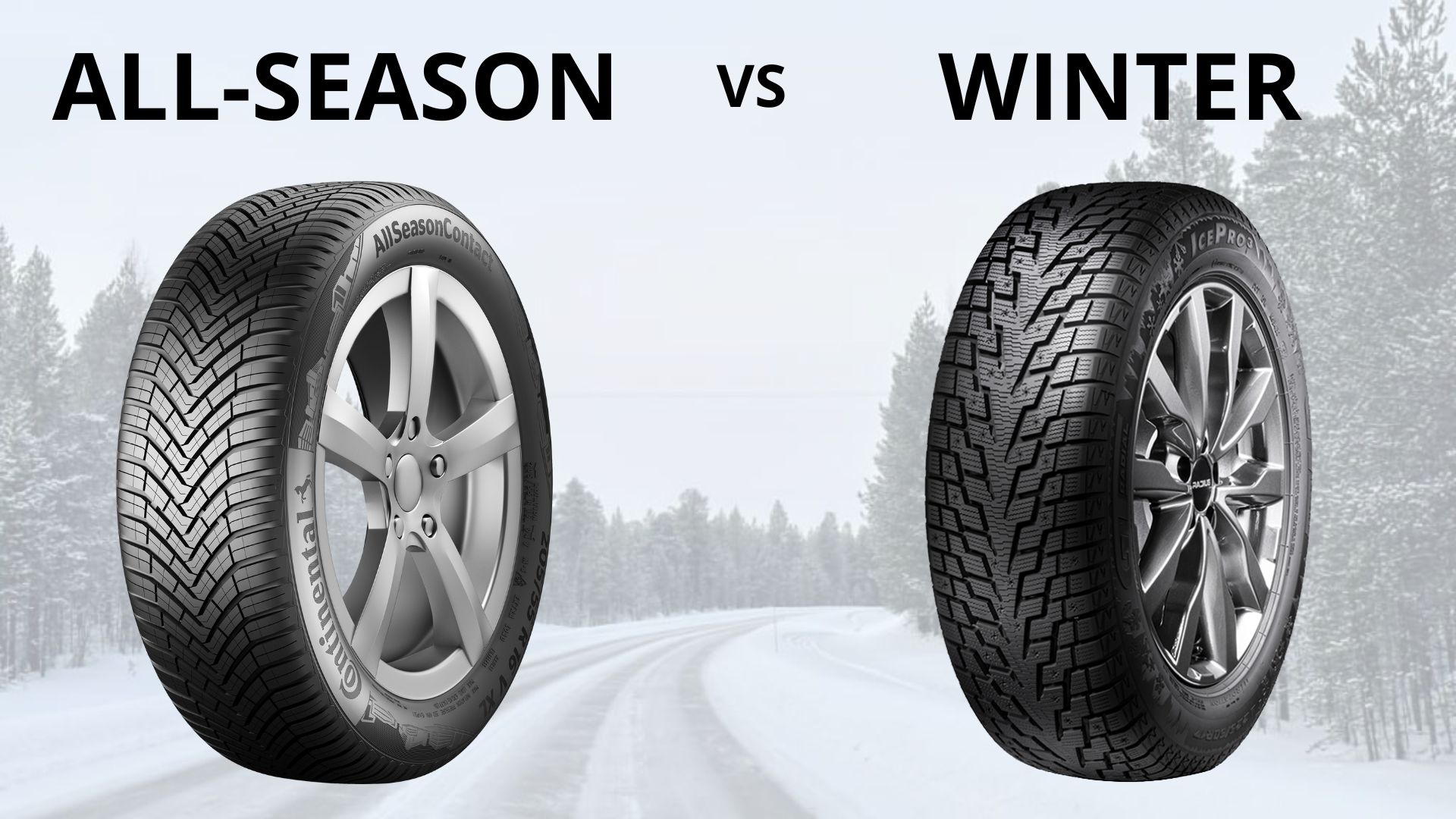Last Updated on August 10, 2025 by Tom
Some tires get by just fine when winter barely makes an appearance. Others are made for mornings when the driveway’s iced over and the road salt crunches under your wheels. If you’re figuring out the difference between all season vs winter tires, you’re not just looking at rubber and tread, you’re deciding how your car handles when the seasons stop playing nice.
How All-Season Tires Fit into Driving Conditions
All-season tires show up on most cars right from the dealership. They’re the default for commuters, crossovers, and sedans in places where winter doesn’t throw too many punches. The rubber’s firm enough to hold up in summer heat, soft enough to flex a bit when the cold sets in. The tread is quiet, symmetrical, made to handle rain, light snow, and long highway miles.
This flexibility has limits. Once the temperature drops below 45°F, all-season tires start to feel stiff. Braking distance extends and the hold they have on the road diminishes, especially on cold pavement, icy bridges, or mornings when frost hasn’t melted off the blacktop. You can still drive on them, but the margin for error narrows. If you’re in the southern half of the U.S.; Texas, the Carolinas, most of California, they’ll probably do just fine all year. You get decent mileage, low road noise, and a good blend of ride quality and fuel economy. But in regions where winter shows it’s icy hand, they feel like the wrong model for the road.
Bonus tip: Curious whether all-season tires are actually worth it? It depends heavily on where and how you drive.
All Season vs Winter Tires – When the Forecast Isn’t Just Cold, It’s Brutal
Winter tires aren’t trying to do it all, they’re specialist rubber. The compound stays pliable when the temperature nosedives, which means the rubber doesn’t just slide across frozen pavement, it clings. That flexibility turns into traction when you’re navigating a slushy intersection or easing down a steep, icy grade.
Look closer and you’ll see why. The grooves run deeper, the siping cuts tighter, and the tread’s designed to dig in rather than glide. Studless winter models now rival the old metal-studded ones, sinking into packed snow and redirecting slush instead of hydroplaning through it. It’s the difference between stopping in time and sliding past the line.
Want to know if your tires are up to the task? Here’s how to tell if your tires are all-season or something else.
Legally, the rules depend on where you’re driving. The Three-Peak Mountain Snowflake stamped on the sidewall isn’t for show, it certifies the tire’s ability to grip in severe snow. In places like Vermont, that marking is mandatory on certain roads during snow season. No marking? You’re facing a ticket.
Learn more from NHTSA’s official tire safety information
While they perform brilliantly in the cold weather in these frosty regions, winter tires overstretch in warmer months. The rubber that hugs ice starts to break down on dry asphalt, reducing performance. Handling feels loose, road noise kicks up, and wear accelerates. Once the freeze fades, swap them out or risk burning through rubber that wasn’t meant to see July temperatures.
All Season vs Winter Tires – What If You Don’t Want to Swap Tires Twice a Year?
Not everyone’s up for swapping tires every six months. All-weather tires were made for that in-between space, where winter shows up, but not with blizzards every week. They carry the same Three-Peak Mountain Snowflake symbol you’ll find on winter tires, which means they’re legal in cold-weather states with traction laws on the books.
What sets them apart isn’t just the badge. The tread is tuned for unpredictability; patterns that stay steady in the rain, grooves that keep contact when temperatures plunge. The compound walks a tightrope too, pliable enough for frost-covered roads, stable enough not to smear on hot asphalt. You give up some grip compared to dedicated winter rubber, but gain back freedom from seasonal swaps.
If you want a single set that can ride out both sleet and sun without checking the calendar, all-weather tires close the gap without feeling like a compromise. If you live in places like Kentucky, New Jersey, or Oregon, where winters show up but don’t usually turn extreme, all-season models are your best bet. You won’t get top-tier performance in any one season, but you won’t be caught off guard when the weather turns bad.
Match Your Tire to Your Climate, Not Just Your Commute
If your winters are short and snow rarely sticks, all-season tires are fine. For longer, harsher winters, you’ll need the grip and control that winter tires provide. All-weather tires sit in the middle, made for changing seasons without the swap.
What you drive on affects how you stop, turn, and stay safe. Choose based on how winter shows up where you live, and your tires will be ready when the roads stop cooperating.
Can I drive with winter tires all year long?
You can, but you shouldn’t. They’ll wear down fast in warm conditions and get sloppy on dry roads.
Do I need winter tires if I have all-wheel drive?
Yes. AWD helps winter tires stop faster and give you more control in hazardous conditions during the wintertime.
Are all-weather tires and winter tires the same thing?
Not quite. They’re certified for winter use, but don’t perform as well in deep snow or extreme cold. Still, they’re much safer than all-seasons when things freeze over.
Do winter tires really make that big of a difference?
Yes, and more than most drivers expect. You feel it the moment you hit the brakes or take a turn on a slick road. The car holds its line better, stops sooner, and doesn’t slide out when you least expect it. It’s added performance that shows up when conditions get rough.
Interested in more? Check out how all-season tires compare to other types of tires:

